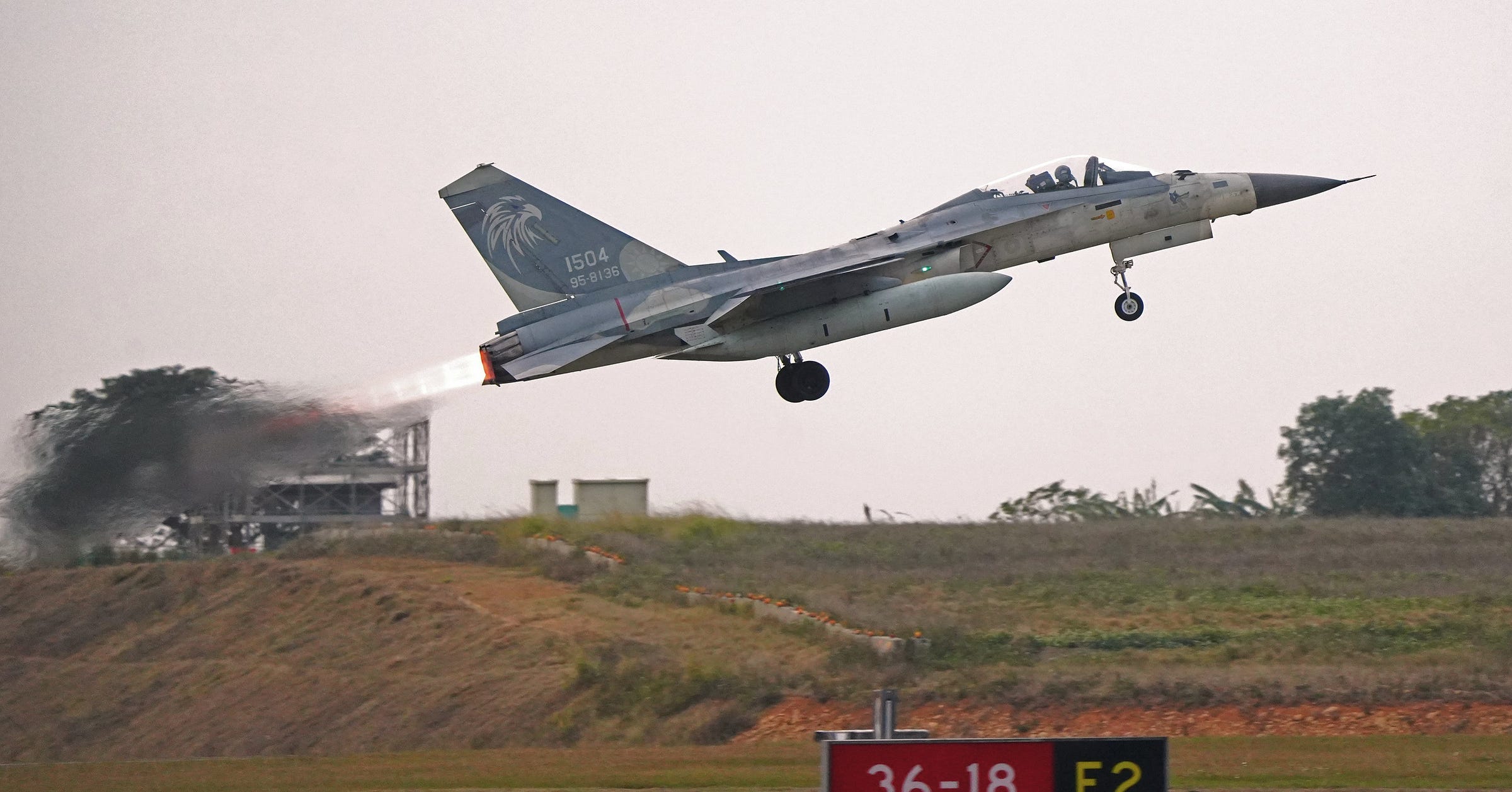Preparing To Fight China
Taiwan's Republic of China Air Force might survive just a few hours if China makes good on decades of threats to invade the island state—but that could be enough time for the U.S. to intervene

The Republic of China Air Force might survive just a few hours as a viable fighting force if and when autocratic China finally makes good on decades of threats and launches a full-scale invasion of democratic Taiwan.
But that doesn’t mean Taiwan can’t defend itself from the air—and buy time for a possible American intervention. An intervention that itself would be primarily aerial, and could go down in history as the most intensive anti-ship campaign ever waged.
Analysts anticipate that the PLA Rocket Force would initiate an invasion with a devastating barrage of ballistic and cruise missiles, after which the PLA Air Force would take to the air for a sustained period of precision bombardment.
“Based on PLA studies that appear to be indicative of doctrine, the PLA will seek to gain rapid mastery of the air before conducting amphibious operations across the Taiwan Strait,” explained Ian Easton, a professor at the U.S. Naval War College in Rhode Island.
The ROCAF’s 11 major air bases—housing the service’s roughly 600 aircraft including around 350 AIDC F-CK-1, Dassault Mirage 2000 and Lockheed Martin F-16 fighters—would be top targets. “A sudden, coordinated missile attack on all of Taiwan’s airports and air bases is possible and would play to the PLA’s strengths,” Easton said.
Those strengths include an arsenal of several thousand ballistic and cruise missiles and no fewer than 2,000 tactical aircraft. Chinese missiles and bombs could crater runways, flatten hardened aircraft shelters, smash the entrances to underground hangars and, of course, destroy any Taiwanese aircraft that get caught on the ground and out in the open.
Taiwanese squadrons could disintegrate fast. “If the ROCAF were present at its bases when the PLA launched a large-scale assault on the island, I would estimate that its combat effectiveness might be measured in minutes to hours,” said Thomas Shugart, a retired U.S. Navy captain who now heads Archer Strategic Consulting in Virginia.
For the Taiwanese, going underground might be the smartest strategy. “By increasing the number of fighters routinely kept inside tunnels, it seems likely that Taiwan could maintain a fleet-in-being until Zero Day,” the day the amphibious fleet hits the beaches, Shugart said.
The only other survival strategy might involve whole squadrons retreating from Taiwan. “Were Taiwan to evacuate the ROCAF in the event of an impending attack—if it had sufficient warning—I could see it fighting on as a force in exile from more dispersed bases elsewhere, possibly in conjunction with U.S. and partner air forces,” Shugart said. “In that case, it could live to fight another day.”


Yes and the Ukrainian army was supposed to last only 3 days. Don't underestimate a determined resistance fighting for survival.
All of Nvidia’s AI chips. AI supremacy will decide the future control of the world’s economy and military power. China already controls the processing of lithium and other rare earth elements required for advanced electronics, magnets, batteries and needed for everything from automobiles to critical infrastructure systems to advanced military hardware. It would take an utter moron not to understand if China takes over Taiwan, the U.S and the rest of Western democracies become subservient to China’s whims. That is know as “soft power”, and China has shown time and again it will wield it to obtain advantage. Japan understands this, perhaps more than the current U.S. administration. Although the U.S. military and major corporations are critically aware of the risk of allowing China to taken over Taiwan.
If left with no other choice, the U.S. would have to totally destroy Taiwan’s capability to keep producing its advanced chipsets. And I would not be in the least surprised that such contingency plans are already drawn by both the Pentagon and CIA. After destroying the only valuable aspect of Taiwan, the U.S. and its allies could blockade and put an import and export embargo on China; killing its economy by “death of a thousand cuts”. Denying China the critical raw materials and energy it needs, forcing its navy to venture further from its territory to try to open up choke points established to deny maritime access to its ports. That will expose its navy to the USAF and USN arsenal of aircraft capable of raining hell upon them. The decimation would be swift and effective, defanging the Chinese dragon. That’s how I’d play it. Not fighting using China’s advantage, but our own.
Destroying U.S. infrastructure using its cyber warriors is already in the Chinese playbook. We have found hidden implanted communication bugs in Chinese products used in our critical infrastructure already. Our electrical grid, hydroelectric dams, water systems, energy plants and transportation systems already have been breached by cyber warfare conducted by China against the U.S., Japan and other allies. Make no mistake, China is preparing for a destructive asymmetric war absent of nuclear weapons hoping they can avoid being thrown into the Stone Age by a nuclear escalation that decimates their future by destroying their industrial infrastructure and collapsing their economy—which would be an end to the CCP.